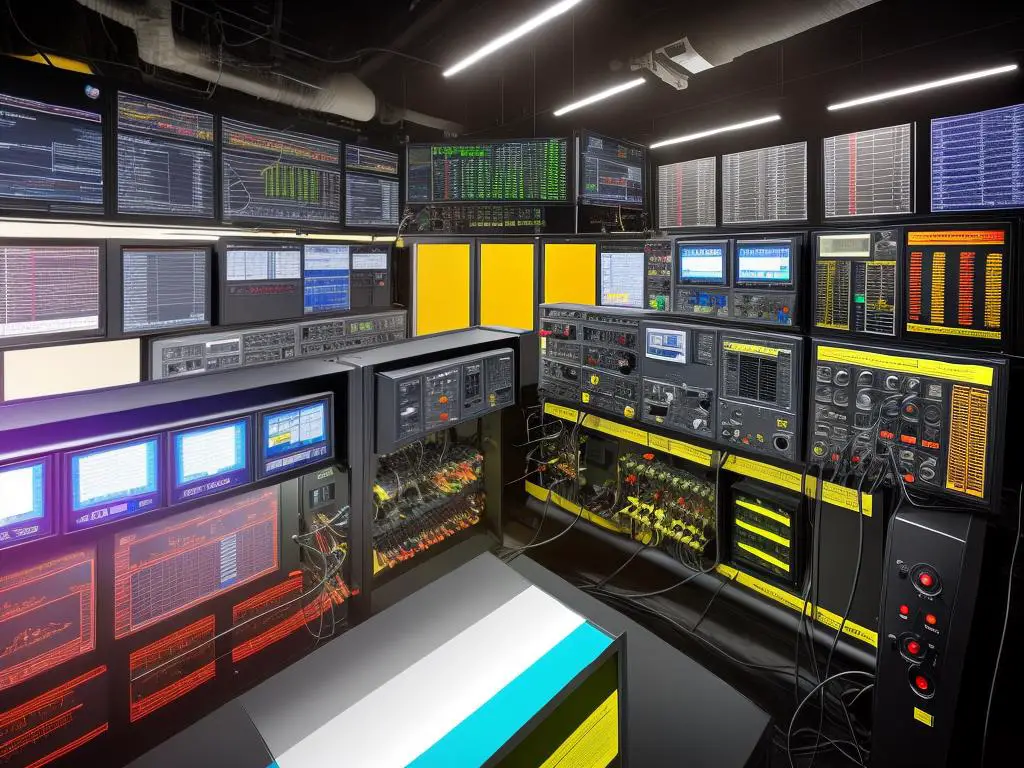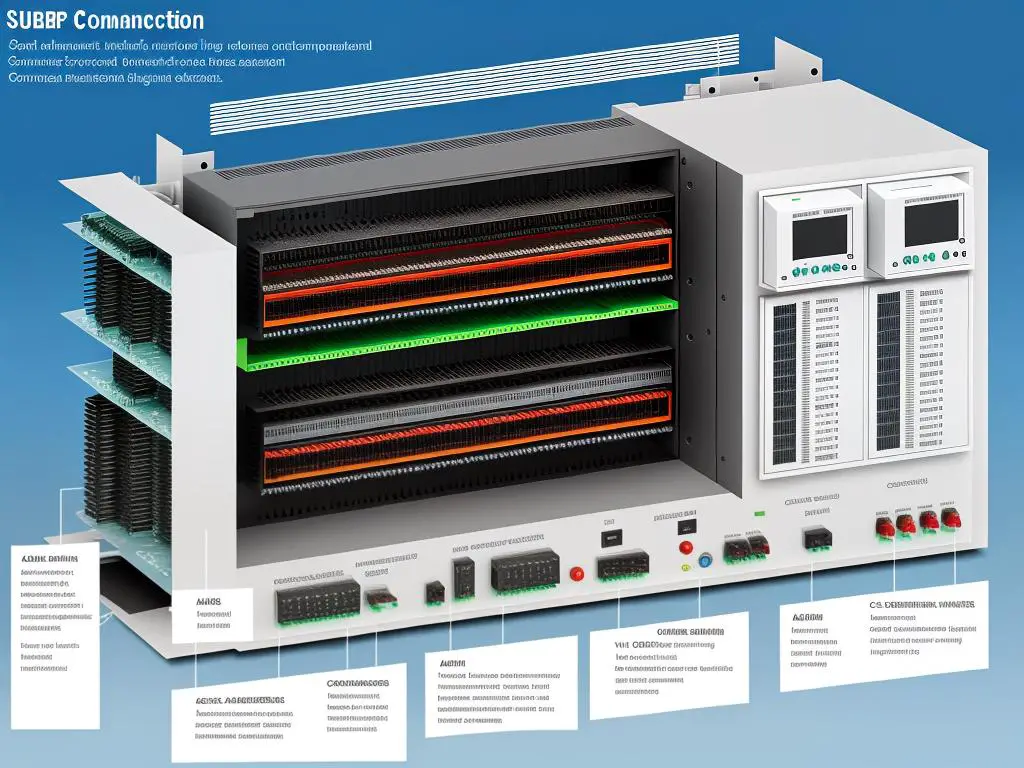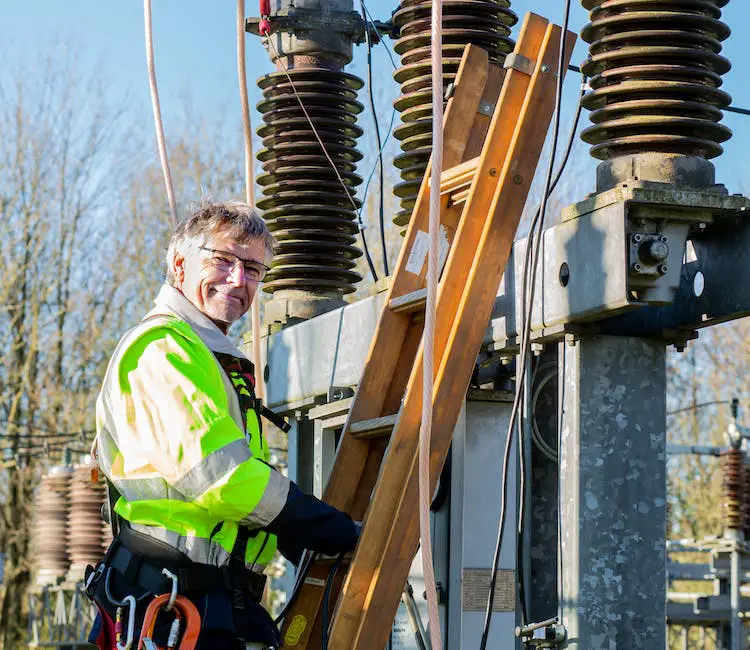Overcoming Hurdles in Substation Automation: The evolution of power systems has led to the emergence of substation automation, an integral aspect of the modern energy sector poised to revolutionize how electricity is managed and distributed. Substation automation leverages cutting-edge technology, software, hardware, and communication systems to optimize efficiency, ensure reliability, and pave the way for smart grids. This process, however, is accompanied by a plethora of technical, human, financial, and regulatory challenges that must be navigated for successful implementation. This examination dives into the intricacies of such automation, sheds light on the issues faced, and provides insights on overcoming these barriers.
Understanding Substation Automation Overcoming Hurdles in Substation Automation
What is Substation Automation?
Substation automation is a method of using data from Intelligent Electronic Devices (IEDs), control and automation capabilities within the substation, and control commands from remote users to control and optimize the assets within the substation system. It’s an integral part of the smart grid systems that modern society is growing increasingly reliant upon. This technology has revolutionized the manner in which substations operate, leading to increased efficiency, reliability, and control.
Components Involved in Substation Automation
A substation automation system is typically a combination of numerous different types of equipment and software. This may include microprocessor-based smart devices, control and managing systems, and communication systems. The smart devices and sensors collect data from the substation and relay it to a central controller, where the information is then used to optimize substation performance.
The automation systems used can vary greatly depending on the specific needs and resources of the substation, but they generally aim to increase the operational efficiency and safety of the power system.
Understanding the Challenges
Despite its benefits and advancements, substation automation is not without its challenges. Implementation of this technology presents a range of technically complex and tricky obstacles.
Technical Challenges
One of the biggest technical challenges with substation automation is that it requires a significant upgrade in infrastructure. Implementing this technology often requires the replacement of old electromechanical devices with modern, microprocessor-based devices. This can be costly and time-consuming. Moreover, many of these new devices need to be designed to continue supporting legacy protocols while also supporting the newer, standardized protocols.
Enhancing Efficiency and Safety: The Power of HMI Software
Another technical challenge is related to the cyber security of the automated substation. The more interconnected the systems are, the higher the risk that they can be compromised by a cyber-attack. Control systems, communication networks, and even the power generation systems themselves can all be vulnerable.
Operational Challenges
There are also a number of operational and organizational challenges that can arise when implementing substation automation. One of the main operational challenges is to properly train staff to understand and operate the new systems. As with any new technology, there can be a steep learning curve and resistance to change.
Further, another challenge is dealing with maintenance of the new devices and systems. With the high rate of technological advances, equipment can quickly become outdated, requiring continuous up-gradation. This can place a heavy burden on both the financial resources and the manpower of the organization.
Environmental Challenges
Integrating renewable energy resources like solar and wind power into the grid further complicates substation automation. These sources bring variable and unpredictable power into the grid, making it more difficult to balance supply and demand.
Quality of Service
As reliability and quality of service are critical for utilities, another challenge is ensuring the automated system increases reliability without leading to a degradation in service quality. As automation systems are complex and involve a variety of technologies and protocols, there can be consequences for the quality of service when problems arise in the system.
Substation Automation at a Glance
Substation automation is an advanced technology designed to bolster the efficacy and reliability of energy grids. Nevertheless, its adoption is fraught with challenges. These span from technical complexities to operational hindrances and the integration with renewable energy sources, all of which must be adroitly navigated for efficient, secure, and successful automation. Despite such hurdles, substation automation remains a pivotal stride towards the future of power distribution and needs to be tackled judiciously and strategically.

Technological Challenges in Substation Automation
Decoding Substation Automation
Substation automation is a culmination of numerous intricate technological elements such as programmable logical controllers (PLC), intelligent electronic devices (IED), and the Human Machine Interface (HMI), among others. These diverse systems are interconnected to work in harmony and enable a seamless transition in power transmission and distribution.
The Challenge of System Interoperability
One of the foremost challenges in substation automation is system interoperability. The various components and systems involved in substation automation often originate from different manufacturers with their unique programming standards. These programming disparities cause a significant issue when trying to synchronize and operate them as a single unified system. Solutions to this issue require a universal standard that manufacturers can follow making all components interoperable.
Data Handling and Communication
Another critical technological challenge in substation automation is data handling and communication. These automated systems generate massive volumes of data requiring swift and accurate processing for effective operation. The responsibility of receiving, interpreting, and communicating this data between different devices and systems is a daunting task.
The complexity of this task exacerbates when data formats and communication protocols differ between devices, leading to possible misinterpretation or loss of data. Therefore, it is vital to have a robust and efficient communication infrastructure in place that handles diverse data types and ensures seamless flow and precise interpretation.
Real-Time Operation
Electric substations are expected to function in real-time, meaning they need to respond and adapt to changes instantly. This necessity presents a significant challenge since not all components within the automated system may operate at the same speed or efficiently handle real-time data sharing and power adjustments. A small lag or miscommunication can result in significant setbacks like power outages, affecting a vast number of users.
Understanding Substation Automation & IoT Concepts: A Complete guide for beginner
Cybersecurity Issues
Lastl, with the increasing digitization of substations, the threat of cyberattacks is a formidable challenge. Cyber attackers can exploit the vulnerabilities in an automated substation system to cause blackouts or even worse. The importance of robust, effective cybersecurity measures in substation automation cannot be overstated.
Implementing such measures involves not just protecting the system from potential threats but also having a disaster recovery plan in place in case of any breaches. With an effective security plan, the system gains resilience against possible attacks and ensures continuous, safe operations.
Unlocking the Future Potential
Even with current challenges, evolving technology hints at a remarkable future for substation automation. The potential for integrating artificial intelligence and machine learning into routine operations, accelerating response time, and bolstering security greatly is indeed an exciting leap forward. Persistent research and groundbreaking innovations in this realm are pivotal to surmount existing obstacles and to fully harness the potential power of substation automation.

Human Factors and Substation Automation
Human Influence in a Technical Domain
At face value, automation within the seemingly mechanical and stoic environment of substations would appear entirely technical. While the significance of advanced technology as the driving force behind this transition is undeniable, there’s another dimension just as critical and often underemphasized – the human factor.
The Need for Training
In the coil of wires, switches, and transformers, human beings are the invisible connectors. They align the conductors and control the flow of electricity. But as substations steer towards automation, the role of these individuals twists and bends. The traditional methods of observation and physical adjustments give way to digital controls and complex software. It demands a fresh set of skills, a new understanding of how grids operate, thus illustrating the pressing need for comprehensive training.
These courses should ideally encompass both theoretical lessons and practical scenarios. Technical knowledge should walk hand in hand with real-life applications to facilitate a smooth transition from old frameworks to the new automation systems.
Overcoming Staff Resistance
In the quiet echo of substation chambers, resistance sometimes comes in the shape of currents against transformers, but in the journey of automation, it also thrives within the minds of working staff. Change, even though exciting, can be intimidating. There’s fear hidden in the folds of unfamiliarity – fear of redundancy, or of failing to adapt to the new methods.
Winning over this mental resistance is crucial in the road towards successful substation automation. Open conversations, reassurances about job security, and a step-by-step introduction to the modernized systems can help in this regard, making staff members active participants in the evolution, instead of passive bystanders caught in the whirlwind of automation.
Bridging the Skills Shortage
The electric hum of substations becomes a melody only when the right hands guide the symphony. But with automation, there’s a skills shortage in the market, a gap that requires attention. Demand for individuals who possess both electrical knowledge and software expertise will rise.
Collaborations with academic institutions could help prepare the upcoming workforce. Incorporating relevant modules within curriculums can supply a stream of skilled professionals ready to take on the intricacies of automated substations – ensuring the symphony not only continues but evolves into a more harmonious melody.
What is Remote Terminal Unit? A Basic Guide
New Work Styles
Like the hum of a substation indicating the flow of power, the buzz of human activity keeps the system alive. But as automation steps in, work styles wave goodbye to the traditional methods. Processes become more remote, demands more instantaneous, and decisions more data-driven.
It is a shift that requires, more than anything, adaptability. Work schedules, reporting protocols, even communication channels may have to be revised. Coordination within the team as well as with external stakeholders will call for a deep understanding of the new system. It will be a transformation, not just of the substations, but also of the way humans interact with this vast, electrical network.
Substation automation presents a compelling testament to how technology is shaping our world, but more importantly, to the resilience and adaptability of the human spirit. Although the evolution of substation automation brings new challenges and stresses, it also provides us an opportunity to showcase our problem-solving abilities and innovative mindset.

Financial and Regulatory Challenges
Navigating Uncharted Waters
The landscape of substation automation is like navigating uncharted waters, where only the brave or resource-rich venture. It is a sector marked by enormous investment risks and equally substantial potential rewards. Financial hurdles and regulatory compliance issues frequently stand as significant barriers, shaping a complex matrix of challenges that power companies must adeptly conquer.
Capital Hungry Beast
Substation automation is a capital-hungry beast, demanding a substantial initial investment for equipment and software, and equally draining operational and maintenance expenses. These costs can often deter energy companies, particularly smaller ones, from expanding their horizons into this groundbreaking realm of energy supply.
However, numerous funding options do exist, ranging from self-generated company funds to government grants, private investments, and loans. Each funding option comes with its own set of pros and cons to consider. For instance, self-generated funds ensure independence, but limit the magnitude of potential investment, while loans provide a larger capital base but come with interest rates and repayment obligations.
The Regulatory Dance
The intertwining of power supply and advanced technology also initiates a complex legal dance. Not only do energy companies have to follow the technical guidelines laid out by authorities such as the North American Electric Reliability Corporation, they also must abide by an array of federal, state, and local regulations.
These guidelines and regulations are a constantly moving target, their aim often swaying based on political trends. Energy companies constantly find themselves having to adapt to new directives and standards that impact their operating procedures, technological choices, and ultimately, their bottom line.
Moreover, the regulatory environment is not uniform across states or countries. This creates a particularly challenging landscape for energy companies that operate in multiple jurisdictions, with each jurisdiction adding its own layer of rules to light the path of substation automation.
Navigating the Network
Despite operating in an environment filled with constraints and complexities, energy companies continue to push the boundaries with their innovative approaches to substation automation. Their successful strategies commonly consist of the following elements: maintaining open communication with regulatory bodies to stay abreast with policy changes, investing in adaptable technology solutions that can accommodate regulatory shifts, and implementing smart financial strategies to sustain the advancement of power supply.
These companies, the torchbearers of substation automation, are exploring an untreaded territory, with substantial expenses and regulatory uncertainties as part of the trail. However, the journey promises the potential to revolutionize the energy industry.

Overcoming the Barriers to Substation Automation
Tackling the Challenges Head-On
Substation automation is undeniably a vital facet of the contemporary power supply industry, but it is replete with its share of obstacles. The industry’s frontrunners are persistently designing solutions to overcome such challenges. Their key areas of focus include technological advancements, employee skills enhancement, innovative funding schemes, and lobbying for more supportive regulatory frameworks.
The Technological Obstacle
Like a highway under construction – promising smoother travel someday but presently a cause of delays – new technology can present a two-fold problem. On one side, there is the issue of compatibly integrating newer automated systems with older existing infrastructure. And then there’s the cost of these advancements, often so costly that it becomes a formidable barrier to substation automation.
To surmount these problems, power industry leaders are investing in research and development for less expensive and more efficient automation technologies. While this isn’t an overnight fix, it promises long-term solutions. Application of smart grid technology in substations has been widely explored, lauded for its potential to improve efficiency and reliability while significantly cutting costs.
Upskilling the Workforce
Just as a sports car is wasted in the hands of someone who only knows how to ride a bicycle, so are sophisticated automation systems if the staff don’t possess the right expertise. As technology advances, so must the skills of the workforce. Thus, upskilling staff becomes both a challenge and a solution in the substation automation arena.
Considered an integral part of the modernization process, workforce education and retraining programs are being actively implemented across the sector. Through these programs, staff can keep abreast with the latest developments in the automation technology landscape, and consequently, maximize these technologies’ advantages effectively.
Funding Models and Regulatory Frameworks
Money and law – the dual gatekeepers of any initiative’s success. Judicious planning of investment models and advocating for supportive regulatory frameworks are essential strategies in overcoming challenges in substation automation.
Innovative funding options, such as public-private partnerships, have shown promise, providing much-needed monetary resources to finance technological upgrades. These partnerships not only resolve the immediate financial challenges but also foster a cooperative environment in advancing substation automation.
Regulations, though designed for control and protection, can sometimes turn restrictive, particularly when they lag behind fast-paced technological advancements. To this end, industry leaders must continually engage with policymakers, articulating the need for regulations that support and encourage substation automation innovations. The ideal regulatory framework would foster innovation while ensuring safety and delivering valuable services to consumers.
In this ongoing stride towards a more automated future, industry pioneers are navigating through a maze of challenges. Yet, by leveraging technological progress, investing in workforce development, pioneering flexible funding models, and advocating for supportive regulatory frameworks, they’re turning these challenges into stepping-stones, inching us closer to a more energy-efficient future.

Substation automation stands at the confluence of technology, people, finance, and regulations – each bringing its own set of challenges yet offering immense opportunities for optimization and revolutionizing power systems management. To fully capitalize on this potential, it is imperative for energy companies to understand these challenges. By addressing interoperability, managing data flow, upgrading cyber-security, focusing on staff training and adaptability, managing costs, seeking innovative funding, and navigating regulatory hurdles – we can ensure that the path towards substation automation leads to the promised outcomes of efficiency, resilience and the creation of a truly smart grid equipped to meet the energy demands of the future.
